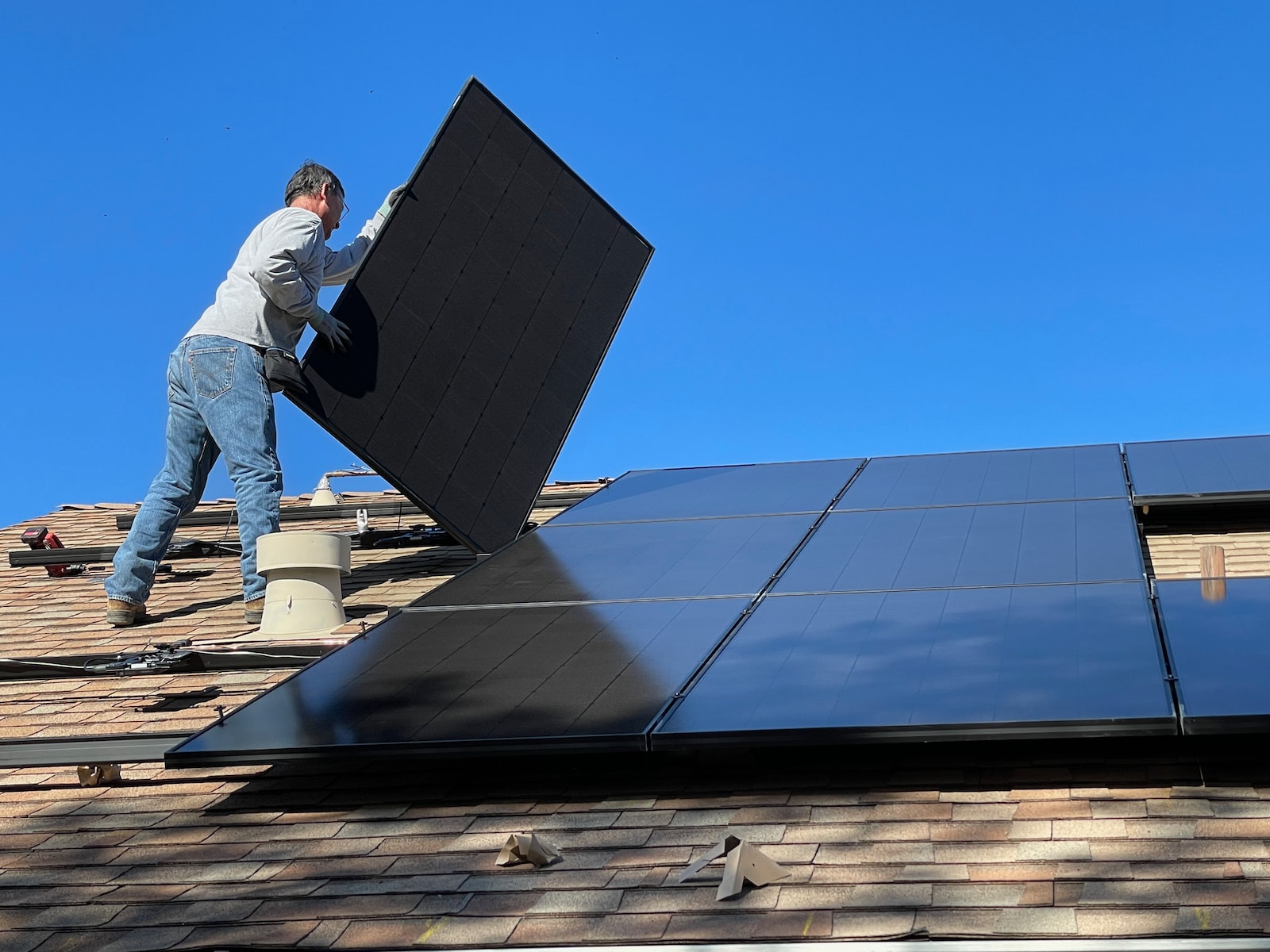Solar panels are typically mounted onto rooftops using racks or frames. These racks provide stability and secure the panels in place, ensuring they can withstand various weather conditions.
The Purpose of the Gap
Now, let’s get to the main question: why are solar panels installed an inch above the roof? There are a few key reasons for this.
Ventilation Benefits
One of the primary reasons for the gap is ventilation. By raising the solar panels slightly above the roof’s surface, air can flow freely underneath them. This ventilation prevents the buildup of heat and moisture, which could potentially damage both the solar panels and the roof.
When solar panels are installed directly on the roof, they can trap heat and create a stagnant environment. Over time, this trapped heat can cause the panels to operate less efficiently and even lead to premature degradation. By allowing air to circulate beneath the panels, the gap helps keep them cool and maximizes their performance.
Temperature Regulation
In addition to ventilation, the gap between the solar panels and the roof also helps regulate the temperature of the panels themselves. Solar panels are most effective at converting sunlight into electricity when they are kept at a lower temperature. By raising them slightly above the roof, the gap allows for better airflow, which helps dissipate heat and prevents overheating.
When solar panels overheat, their efficiency decreases, resulting in a lower energy output. By maintaining a cooler operating temperature, the gap ensures that the panels can generate electricity more effectively, maximizing their overall performance.
Roof Protection
Another crucial advantage of installing solar panels with a gap is roof protection. When solar panels are mounted directly on the roof, the installation process typically involves drilling holes to secure the panels in place. While installers take great care to prevent leaks, there’s always a small risk.
By raising the panels above the roof’s surface, any potential leaks or damage caused during installation are less likely to affect the underlying roof. The gap acts as a protective barrier, reducing the chances of water seeping through and causing damage to the roof structure. This not only safeguards your investment in solar panels but also helps maintain the integrity of your roof.
Maintenance and Accessibility
The gap between solar panels and the roof also provides easier access for maintenance and cleaning. Solar panels require occasional cleaning to remove dust, dirt, and debris that may accumulate on their surface. Additionally, maintenance checks are necessary to ensure the panels are operating optimally.
With the small gap, installers and homeowners can easily access the panels for cleaning and maintenance purposes. This accessibility saves time and effort, making it more convenient to keep the solar panels in top condition. Moreover, it also allows for regular inspection of the roof, ensuring any potential issues are identified and addressed promptly.
Aesthetics and Curb Appeal
Lastly, the gap between the solar panels and the roof can enhance the overall appearance of the installation. Some homeowners may be concerned about the visual impact of solar panels on their roof’s aesthetics. By raising the panels above the roof, the gap creates a visually appealing dimension to the installation. The shadows and depth created by the gap can add a unique touch, making the solar panels more aesthetically pleasing.
Key Takeaway
When it comes to solar panel installation, the gap between the panels and the roof plays a crucial role. It provides ventilation, regulates temperature, protects the roof, and ensures easier maintenance and accessibility. By understanding these benefits, homeowners and building owners can make informed decisions when considering solar panel installations.
If you’re interested in harnessing the power of solar energy, remember that the gap between solar panels and the roof is not just a design choice – it’s a smart installation practice that contributes to the overall efficiency and longevity of your solar panels and roof.
So, whether you’re looking to reduce your carbon footprint, lower your energy bills, or increase the value of your property, solar panels could be a great investment. Just make sure to choose a reputable installer who understands the importance of the gap and follows best practices for installation.
If you have any questions or would like to share your own experiences with solar panel installation, feel free to leave a comment below. Let’s continue the conversation and support each other in embracing sustainable energy solutions!
Disclaimer: The information provided in this article is based on general knowledge and research. It is not intended as professional advice. Please consult with a qualified expert for specific guidance regarding your solar panel installation.



